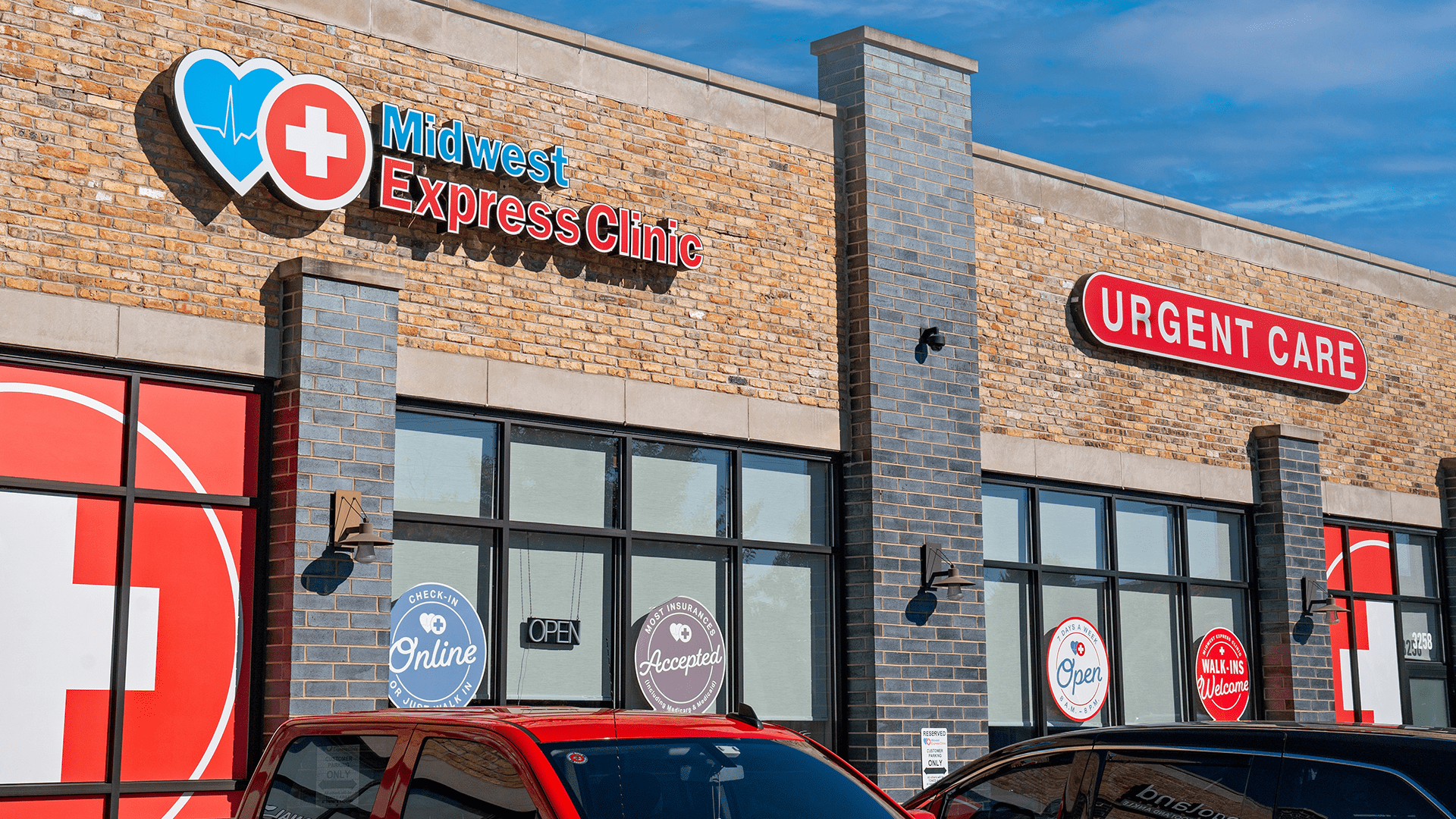What to Expect at a Leading Clinic Offering Urgent Care Services
What to Expect at a Leading Clinic Offering Urgent Care Services
Blog Article
The Relevance of Urgent Treatment Centers in Connecting the Space In Between Medical Care and Emergency Situation Solutions
Immediate care centers have become a vital element of the healthcare landscape, properly dealing with the critical requirement for instant medical attention without considering emergency solutions. By supplying take care of non-life-threatening problems, these centers help to alleviate the problem on emergency clinic and improve person access to timely therapy. Their extended hours and varied solutions deal with a growing population seeking options to conventional medical care. Nonetheless, the progressing duty of immediate care centers elevates important questions concerning their combination within the wider health care system and the effects for person outcomes and source allocation.
Overview of Urgent Care Centers
Immediate treatment facilities have actually ended up being a crucial part of the medical care shipment system, offering available clinical services for non-life-threatening problems. These centers commonly operate outside standard workplace hours, offering patients a choice to emergency clinic and key care settings. Patients looking for urgent care typically present with problems such as small injuries, infections, or diseases that call for prompt interest yet do not present an immediate threat to life or limb.
Urgent treatment centers are staffed by a variety of healthcare professionals, including physicians, registered nurse practitioners, and medical professional aides, that are equipped to identify and deal with different clinical concerns. They typically feature analysis devices such as X-ray devices and research laboratory solutions, allowing them to give comprehensive care on-site.
The facility of immediate care facilities has been influenced by the enhancing demand for timely clinical services in a fast-paced society, where clients may have a hard time to secure consultations with health care service providers. As an outcome, these centers aim to minimize congestion in emergency situation departments, boosting general healthcare efficiency. Additionally, immediate treatment facilities typically act as a bridge between health care and emergency solutions, ensuring that clients receive proper care customized to their certain medical demands.

Advantages of Urgent Treatment Services
Accessing timely medical treatment is a considerable benefit of immediate treatment solutions. These centers offer prompt interest for non-life-threatening problems, properly reducing wait times compared to conventional emergency departments. Individuals looking for look after minor injuries, illnesses, or urgent health and wellness worries can get treatment without the lengthy hold-ups usually related to hospital visits.
An additional secret advantage is the extensive hours of operation. Several immediate treatment facilities are open evenings and weekend breaks, accommodating people that may not have the ability to visit their primary treatment provider throughout conventional office hours. This adaptability makes immediate treatment an easily accessible alternative for those with hectic routines or sudden wellness problems.
Moreover, immediate treatment centers frequently use a large range of services, including analysis screening, X-rays, and standard research laboratory solutions. This extensive technique permits for quick diagnosis and therapy, boosting client fulfillment.
Additionally, urgent treatment facilities are commonly much more economical than emergency situation areas, making them an eye-catching option for individuals without insurance coverage or those with high-deductible plans. On the whole, urgent treatment services play a vital duty in supplying easily accessible, timely, and inexpensive treatment.
Contrast With Health Care
Generally, people usually evaluate their choices between urgent care centers and medical care providers when looking for medical focus. Both serve important roles in the health care system, yet they vary significantly in extent, price, and availability.
Medical care suppliers are usually the very first factor of get in touch with for patients, concentrating on lasting health and wellness administration, preventive treatment, and chronic disease administration. They use continuity of treatment, promoting a patient-provider partnership that permits detailed health assessments and customized treatment plans. Arranging a consultation can be time-consuming, commonly calling for days or weeks in advancement. Urgent Care.
On the other hand, immediate treatment centers supply immediate treatment for non-life-threatening problems that need prompt interest, such as minor injuries or infections. These facilities often run outside of typical office hours, have a peek at this site fitting people who might not have the ability to visit their main treatment supplier during routine organization times. Additionally, urgent treatment is normally extra affordable than emergency room sees, making it an attractive alternative for those with limited healthcare gain access to.
Ultimately, while immediate treatment centers and key treatment carriers both add to client health and wellness, they deal with distinct demands, making it vital for clients to determine which alternative ideal lines up with their situations.
Emergency Situation Providers Interaction
The interaction in between immediate care centers and emergency situation solutions is a crucial facet of the medical care landscape, especially when clients deal with scenarios that may intensify in seriousness. Urgent treatment centers act as a bridge in between primary treatment and emergency situation departments, addressing non-life-threatening conditions that require prompt focus. This partnership enhances individual results and optimizes resource allocation within the healthcare system.
When individuals offer with urgent but not serious problems, urgent care facilities can effectively handle their demands, alleviating blockage in emergency clinic. Facilities geared up with analysis abilities can help with timely referrals to emergency situation services when an individual's problem exceeds the scope of immediate care treatment. This smooth communication aids make sure that clients receive the appropriate level of care without unnecessary hold-ups.
Moreover, reliable communication in between urgent treatment providers and emergency situation solutions is important. Sharing person info and treatment histories cultivates collaborated treatment, reducing the risk of repetitive examinations and procedures. As healthcare remains to evolve, the dynamic connection in between urgent treatment facilities and emergency situation services will certainly play an essential function in boosting patient care efficiency, fulfillment, and overall health outcomes within the neighborhood.
Future of Urgent Care Facilities
As health care demands advance, the future of urgent treatment centers is poised to end up being increasingly important to the overall clinical ecological community (Urgent Care). These facilities are most likely to increase their roles by including innovative innovations, such as telemedicine, man-made intelligence, and electronic health and wellness record moved here combination. This will certainly boost person access and simplify treatment control between urgent treatment, medical care, and emergency situation solutions
In addition, urgent care facilities are expected to diversify their service offerings to consist of preventive care and persistent condition monitoring. This shift will position them as vital components in managing populace health, decreasing the problem on emergency situation divisions, and dealing with gaps in health care accessibility.
The growing fad of value-based care will better speed up the improvement of immediate care facilities, prompting them to concentrate on patient results and satisfaction. Facilities might likewise embrace joint method versions, functioning very closely with professionals and health care providers to ensure comprehensive individual monitoring.
Verdict
In conclusion, immediate treatment centers offer an essential function in the medical care system by providing instant access to treatment for non-life-threatening problems, successfully minimizing stress on emergency situation solutions. Their extended hours and varied variety of solutions improve patient ease and complete satisfaction, while likewise making certain suitable care distribution. As healthcare needs continue to develop, the function of urgent treatment centers will likely come to be progressively considerable, further bridging the space between medical care and emergency situation services.
The establishment of immediate treatment centers has actually been affected by the raising demand for timely medical solutions in a fast-paced culture, where these details patients may have a hard time to protect visits with key treatment service providers. In addition, immediate care centers often serve as a bridge in between primary treatment and emergency solutions, ensuring that people obtain suitable care customized to their particular clinical needs.
Lots of immediate treatment centers are open nights and weekend breaks, suiting people that may not be able to visit their primary treatment provider throughout standard office hours (Urgent Care). As healthcare proceeds to evolve, the dynamic relationship in between urgent treatment facilities and emergency services will play a critical role in boosting client treatment effectiveness, fulfillment, and overall health and wellness results within the community

Report this page